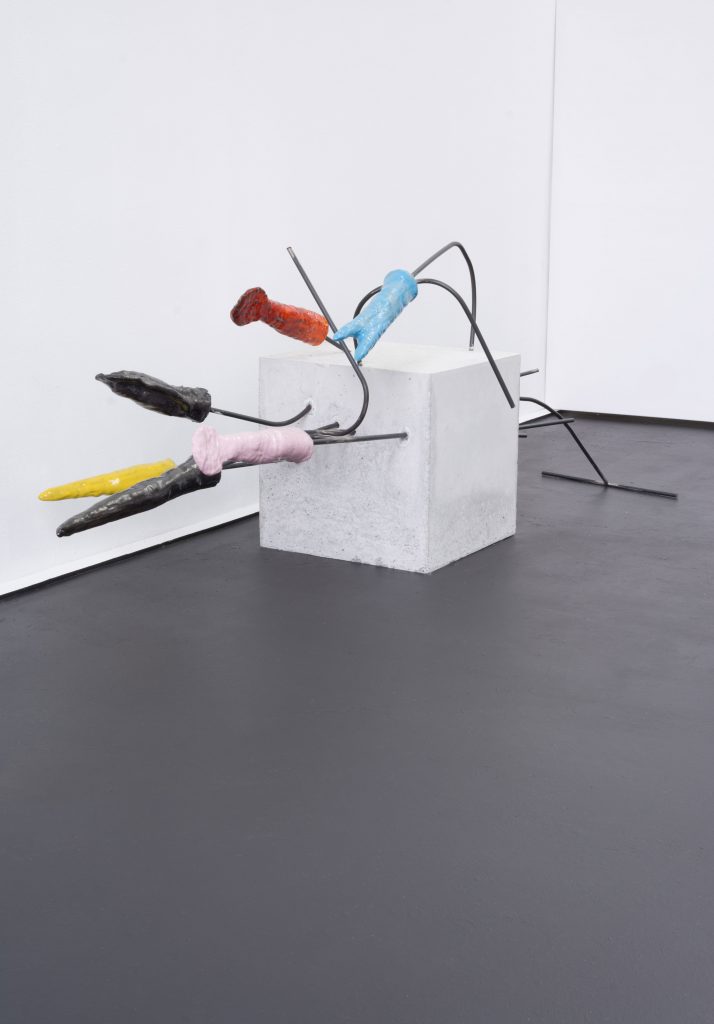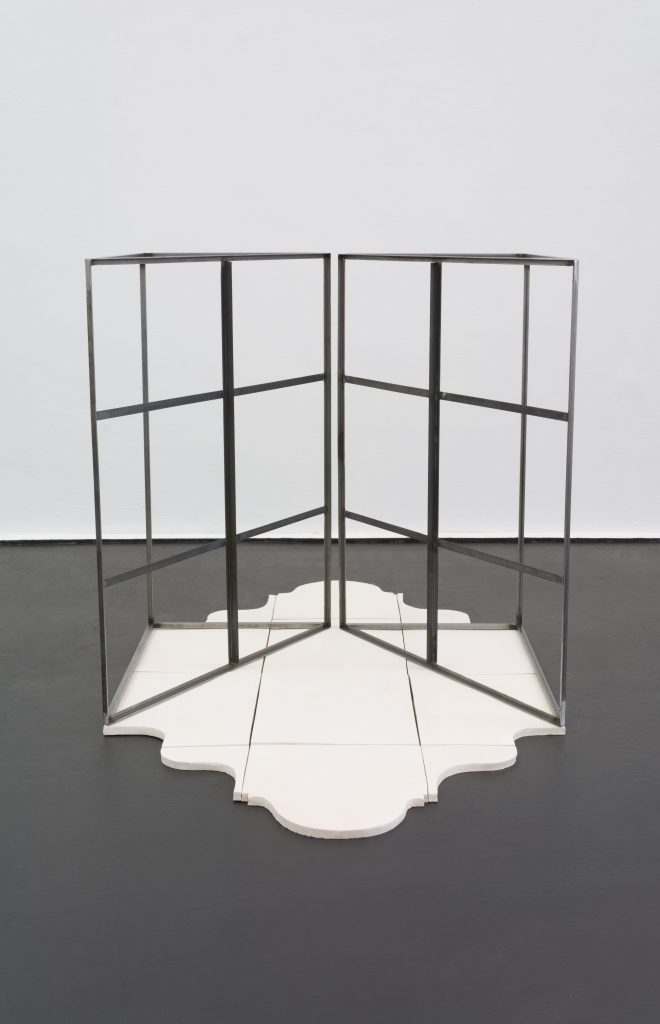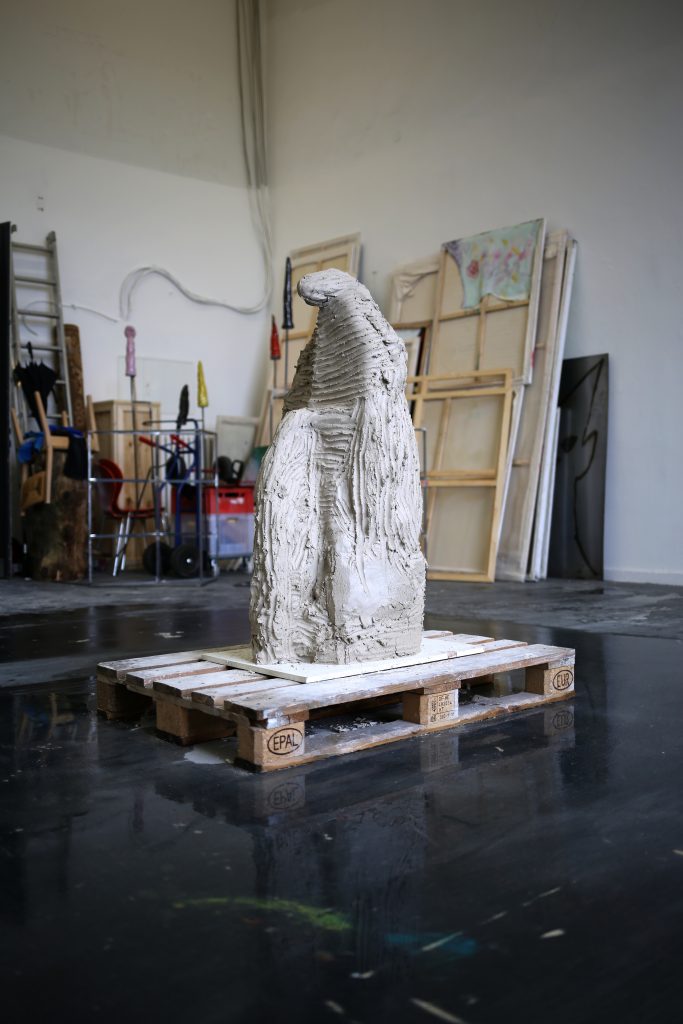
ABSCHLUSSARBEIT (GRADUATION)
Kunstakademie Düsseldorf (2015)
EXEO; lat. heraus-, hinausgehen, weggehen, ausziehen
The work exeo is a summary of sculptures wich are not readily apparent whether it can be touched. The pieces consists of several sculptures, is not tangibly representational. exeo is, first of all, an object that is shown in several modes of being. The earthenware form, the cast, and the mold are all sculptures in themselves. All working steps that took place during the creative process are present in all of their forms. You can see their origin and emanation. The imprints of the seals as well as of the mold’s burlap scraps are likewise components of the work. The sculptures are authentic and honest. They lay bare the necessary working steps. They are simple, raw things – but they have not been consciously reduced to their essence.
The work displays a “This is how it is”, or “This is how it looks”; the sculpture, for instance, springs from the form. Both the development in thoughts and the work itself, its different steps of becoming, reflect a movement:
something grows, something leans, something stands or lays down. The work thus thematizes itself, by being localized in space as an original, as a negative, and as a positive.

The work exeo is not readily apparent whether it can be touched.
The piece consists of several sculptures, is not tangibly representational. exeo is, first of all, an object that is shown in several modes of being. The earthenware form, the cast, and the mold are all sculptures in themselves. All working steps that took place during the creative process are pre- sent in all of their forms. You can see their origin and emanation. The imprints of the seals as well as of the mold’s burlap scraps are likewise components of the work. The sculptures are authentic and honest. They lay bare the necessary working steps. They are simple, raw things – but they have not been consciously reduced to their essence.
The work displays a “This is how it is”, or “This is how it looks”; the sculpture, for instance, springs from the form. Both the development in thoughts and the work itself, its different steps of becoming, reflect a movement:
something grows, something leans, something stands or lays down. The work thus thematizes itself, by being localized in space as an original, as a negative, and as a positive.

